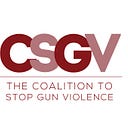First responders are more likely to die by suicide than in the line of duty. We can do more to protect our heroes.
Today, we remember the lives lost during the terrorist attacks on September 11, 2001. As we pay our respects, it is crucial to reflect on all the victims, including those who are sometimes forgotten: the responders who arrived to the scene first. Apart from the thousands killed in the buildings and airplanes, we remember more than 400 firefighters, police officers, and other public safety personnel who died attempting to rescue others. In addition to these casualties, research suggests that nearly 20 percent of first responders and rescue workers present during and after the attacks have developed long-term symptoms of post-traumatic stress. These mental health concerns reflect broader trends among our nation’s first responders that we must address if we are to adequately honor them today — especially as we also mark National Suicide Prevention Week.
Given their proximity to devastating tragedies, first responders have long been affected by trauma. Research has continually shown that firefighters and disaster workers have rates of post-traumatic stress disorder considerably higher than the general population. Unfortunately, first responders frequently face these struggles alone. The stigma associated with mental health may dissuade those at heightened risk from seeking the help they need; many responders seem to fear that admitting to a mental health crisis could be career-ending. Unfortunately, those who do seek help may find it difficult to obtain, as only 3–5 percent of law enforcement agencies offer suicide prevention services, and these services may not be able to provide an adequate level of care.
In short, the dire need for counseling and mental health services in the wake of traumatic events is frequently left unmet, often with tragic and permanent consequences. Last year, 103 firefighters and 140 police officers died by suicide — numbers which drastically exceed deaths in the line of duty for both groups. These suicides are chronically underreported, and some suggest that actual figures could be nearly twice as high. A 2015 study found 44 percent of full time firefighters and 50.5 percent of volunteer firefighters had experienced suicidal ideation, 16.8 percent and 31.0 percent respectively had made suicide plans, and 15.1 percent and 26.8 percent respectively had made a suicide attempt. Overall, those working in protective services — police, firefighters, etc. — comprised roughly 30.5 per 100,000 of all suicides in 2016. This high rate is likely driven in part by the fact that officers of the law frequently have easy access to guns, making suicidal crises even more deadly. In fact, 90 percent of police suicides are by firearm.
This easy access to guns combined with intense and persistent exposure to violent events exacerbates mental health concerns and suicide risk. In particular, the epidemic of gun violence acts as a consistent source of trauma for first responders. Officers first on the scene of a mass shooting witness horrific injuries and act as the first point of contact for victims. Over time, bearing witness to such atrocities without the ability to talk openly about the associated stress can contribute to the development of trauma disorders. It is estimated that around a fifth of first responders on the scene of the 2017 mass shooting in Las Vegas will suffer from post-traumatic stress symptoms for the remainder of their lives. This effect is not limited to mass shootings: in cities with high levels of daily gun violence, suicide rates among police officers are even higher than average.
The cultural and societal roots of first responder suicide are multifaceted and will take time and concerted effort to resolve; however, interventions aimed at providing mental health services are a promising start. Law enforcement agencies should develop robust programs designed to break down the stigma associated with mental illness and aid those at risk of developing trauma disorders or suicidal ideation. Preliminary research suggests that “psychological first aid” services, designed to reach first responders in the immediate period after exposure to trauma, may curb some of the long-term effects.
For instance, in the aftermath of the Pulse shooting in 2016, the Orlando County fire department held “critical incident stress management” sessions for all first responders on the scene. Similar programs, which provide across-the-board trauma counseling, might allow responders to seek help without singling themselves out. They also may begin to normalize symptoms of trauma and mental illness.
The plight of first responders is an urgent call to action for us to both curb the influence of violence — particularly gun violence — in our culture, and to confront the social and cultural barriers to mental healthcare. High levels of trauma and suicide among first responders will remain the norm until we address this public health crisis. Today, as we honor the 9/11 rescue workers who served at the frontlines of an American tragedy, we must remember that first responders contend with traumatizing events on a daily basis — and we must not let our heroes continue to do so alone.
Mia AAssar is the Communications Associate at the Coalition to Stop Gun Violence.
